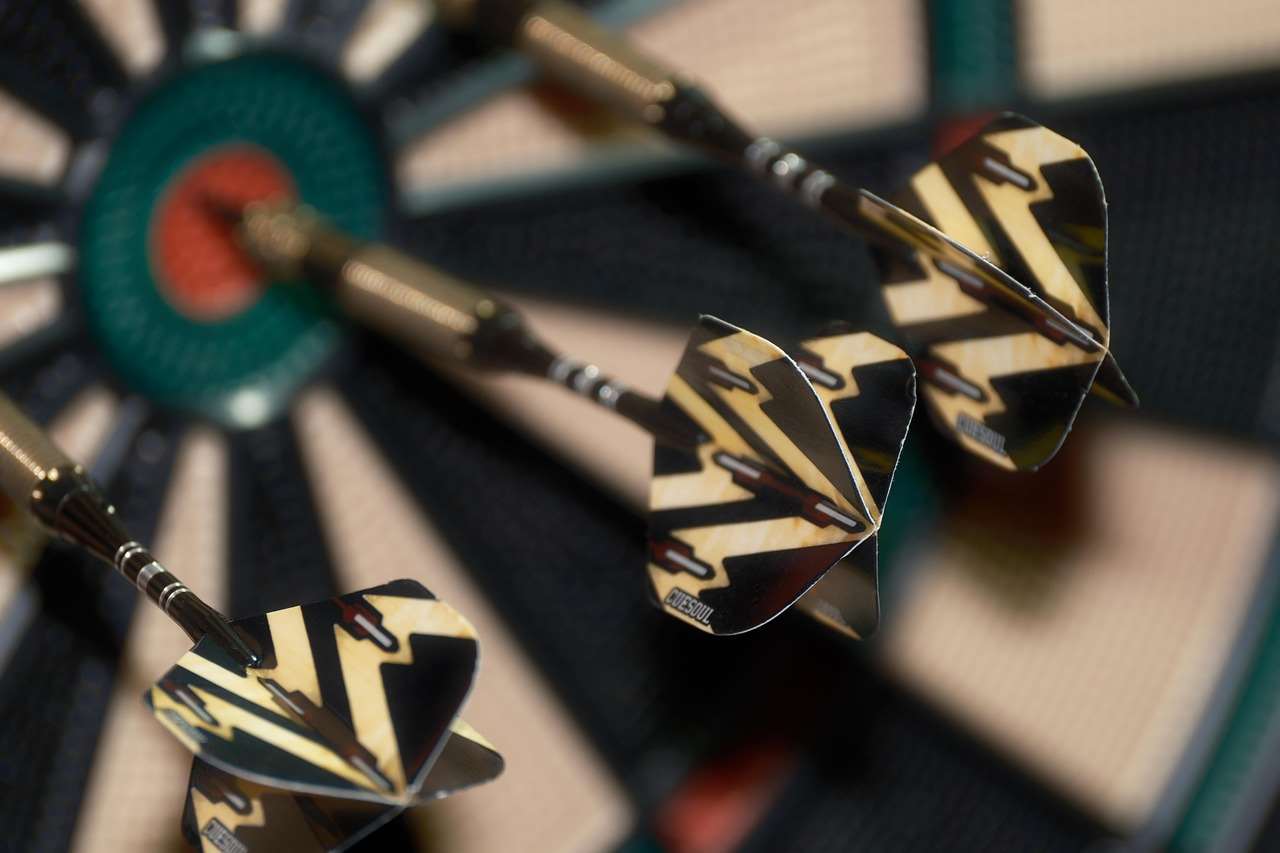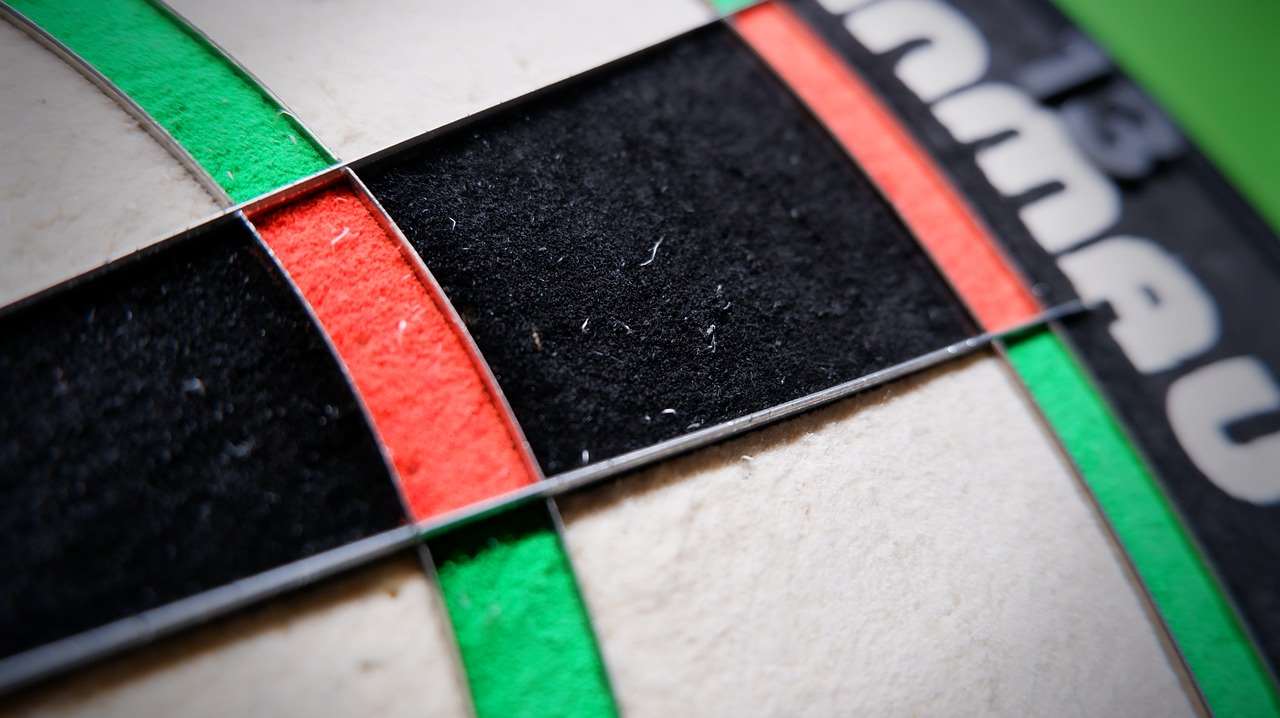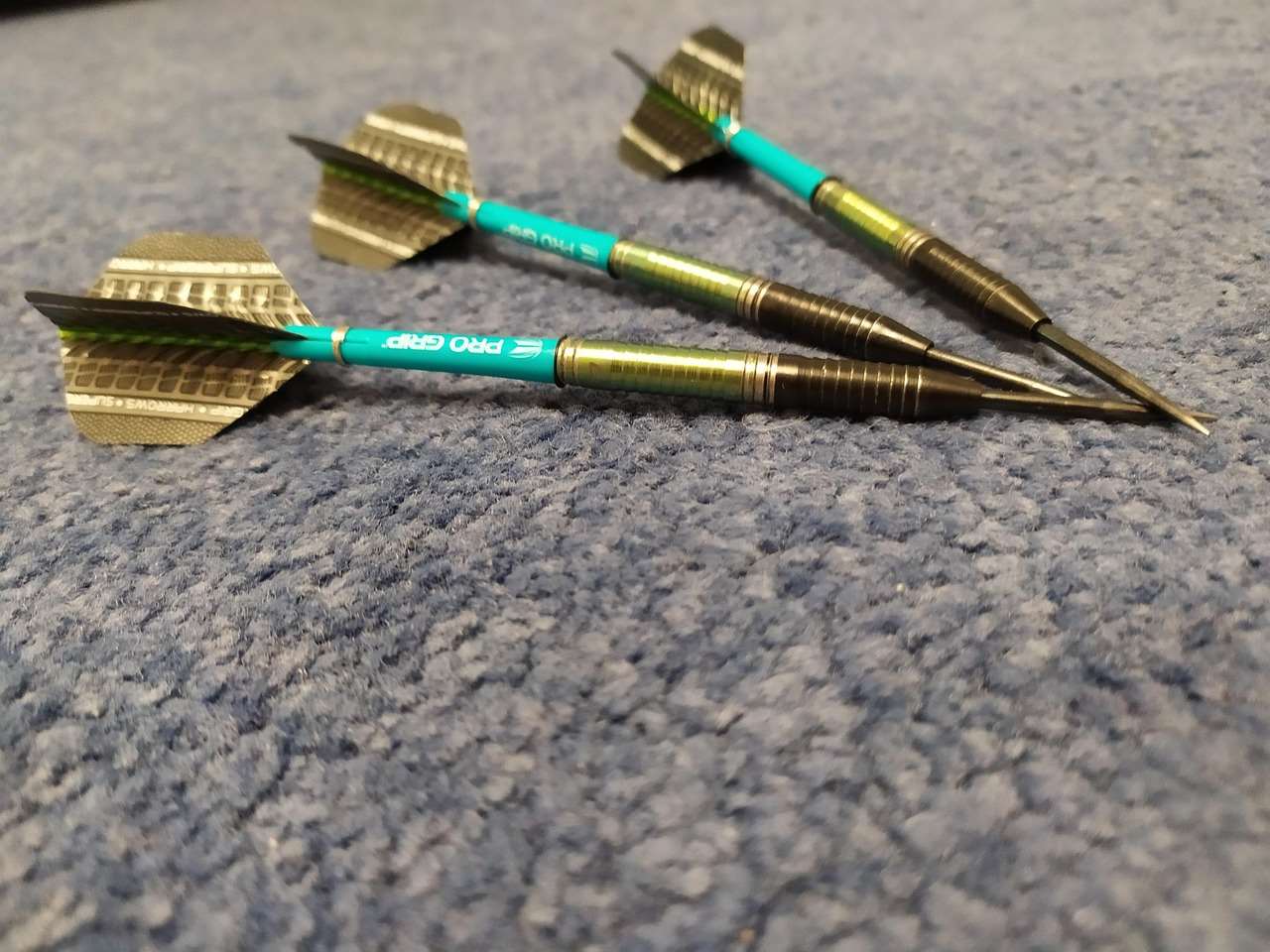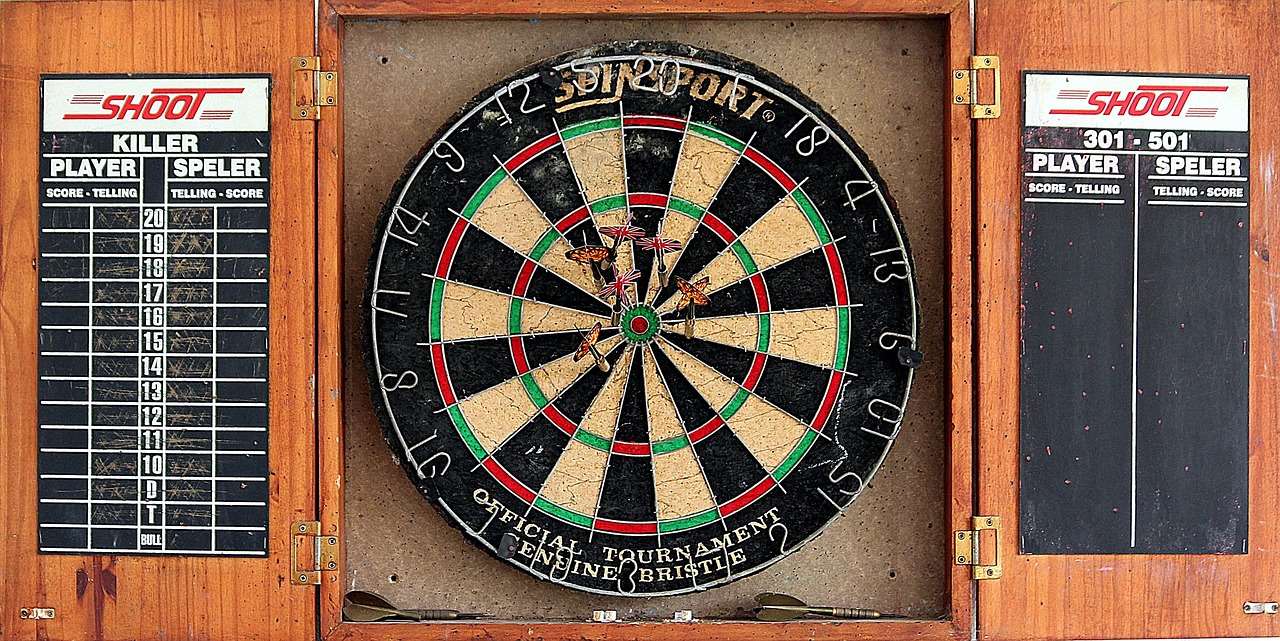The origins of darts are a bit hazy, but most historians trace its beginnings back to medieval England, suggesting that **where did darts start** was likely in some form or another amongst soldiers passing the time between battles with rudimentary throwing games. This article will delve into the evolution of darts, from its possible military roots to its current status as a globally recognized sport.
⚠️ Still Using Pen & Paper (or a Chalkboard)?! ⚠️
Step into the future! The Dart Counter App handles all the scoring, suggests checkouts, and tracks your stats automatically. It's easier than you think!
Try the Smart Dart Counter App FREE!Ready for an upgrade? Click above!
The Medieval Roots: When Did Darts Begin?
To understand **where did darts start**, we have to look back to the medieval period. The most widely accepted theory suggests that darts originated as a military pastime. Soldiers, bored between battles or during long periods of inactivity, would throw short spears or sharpened arrows at the bottoms of upturned wine barrels or at tree trunks. These early forms of target practice eventually evolved into a more formalized game.
Over time, the soldiers refined their throwing techniques, and the targets became more defined. Sections of the tree trunk or barrel bottom were designated as specific scoring zones, and rules began to emerge. This gradual evolution from informal recreation to a more structured game laid the foundation for the darts we know and love today.

From Arrows to Darts: A Gradual Transformation
It’s important to note that these early “darts” were quite different from the streamlined, steel-tipped projectiles used today. They were heavier, often improvised, and lacked the precision engineering of modern darts. However, the core principle – throwing a projectile at a target for points – remained the same. This transition from using arrows or spears to specifically designed darts was a crucial step in the game’s development.
The Evolution of the Dartboard
The dartboard itself has undergone a significant transformation over the centuries. Early targets were simply sections of wood or barrel, with no specific markings or scoring system. As the game evolved, players began to divide the target into sections, assigning different point values to each. The standardization of the dartboard is a story in itself.
The Development of the Scoring System
One of the key milestones in the history of darts was the development of a standardized scoring system. While various regional variations existed, the system we recognize today is largely attributed to **Brian Gamlin**, a carpenter from Lancashire, England, who is credited with devising the now-familiar numbered arrangement sometime around 1896. This arrangement, with the 20 at the top and strategically placed high and low numbers around the board, ensured that accuracy was paramount, and poor shots were heavily penalized. You can improve your accuracy by using the darts best stance.
While Gamlin’s contribution is widely acknowledged, definitive proof of his creation remains elusive, and some debate surrounds the exact origins of the modern scoring system. Nevertheless, the principles behind the layout have stood the test of time, making it an integral part of the game’s appeal. Practicing regularly with a practice darts app with scoring can also help you improve your accuracy.
The Material Evolution: From Wood to Sisal
The material used for dartboards has also evolved. Early boards were made of solid wood, which was prone to drying out, cracking, and requiring frequent soaking to maintain its integrity. In the early 20th century, a shift occurred towards using sisal fibers, tightly packed together to create a more durable and self-healing surface. This innovation significantly extended the lifespan of dartboards and reduced the need for constant maintenance. The arrangement of sections on the board are the uses of darts that make the game.

The Spread of Darts: From Pub Game to Global Sport
From its humble beginnings as a military diversion, darts gradually spread throughout England, becoming a popular pub game. The accessibility of the game, requiring minimal equipment and space, contributed to its widespread adoption in public houses and social gatherings. This pub culture played a vital role in shaping the game’s identity and fostering a sense of community among players.
The Role of Pubs in Popularizing Darts
Pubs provided a natural setting for darts to flourish. They offered a social atmosphere, readily available dartboards, and a built-in audience of potential players. Local leagues and competitions sprung up, further fueling the game’s popularity. Darts became synonymous with pub culture, and the image of players huddled around a dartboard, pint in hand, became a quintessential British scene.
Standardization and Professionalization
While darts enjoyed widespread popularity at the local level, its transition to a globally recognized sport required standardization and professionalization. Various organizations emerged to govern the game, establish uniform rules, and organize tournaments. The British Darts Organisation (BDO) and the Professional Darts Corporation (PDC) are two of the most prominent governing bodies in the world of darts. These organizations have played a crucial role in promoting the game, attracting sponsorship, and elevating the status of professional players. Knowing how much is the darts championship can give you something to shoot for!

Darts Today: A Thriving Global Sport
Today, darts is a thriving global sport, with millions of players and fans around the world. Professional darts tournaments attract huge crowds and television audiences, and top players have become household names. The game’s accessibility and entertainment value continue to drive its popularity, ensuring its place as a beloved pastime and a competitive sport.
The Enduring Appeal of Darts
Several factors contribute to the enduring appeal of darts. It’s a game that can be enjoyed by people of all ages and skill levels. The rules are relatively simple, yet mastering the game requires practice, skill, and mental fortitude. The social aspect of darts, whether played in a pub or at a professional tournament, also adds to its allure. The suspense and excitement of watching a close match, with players battling for every point, make darts a captivating spectator sport.
The Future of Darts
The future of darts looks bright. With continued investment in grassroots development, professionalization, and technological innovation, the game is poised for further growth. Online darts platforms and virtual reality technologies are opening up new avenues for players to compete and interact, expanding the reach of the sport to a global audience. Whether you are looking for dart point replacement tool or you are watching the championship, darts is here to stay.

Where Did Darts Start: A Summary of Its Journey
In essence, the answer to the question of **where did darts start** points back to the informal recreations of medieval soldiers in England. From there, it gradually evolved through centuries of refinement, standardization, and popularization, becoming the sport we know today. The transformation of darts from a simple pastime to a globally recognized sport is a testament to its enduring appeal and the ingenuity of those who shaped its history.
Key Milestones in Darts History:
- Medieval Era: Origins as a military pastime.
- 19th Century: Standardization of the dartboard and scoring system.
- Early 20th Century: Adoption of sisal fibers for dartboards.
- Late 20th Century: Emergence of professional darts organizations (BDO, PDC).
- 21st Century: Global expansion and technological advancements.
So, the next time you pick up a dart, remember the long and fascinating journey that the game has taken. From the battlefields of medieval England to the brightly lit stages of modern tournaments, darts has captured the hearts and minds of players and fans around the world.

Take Your Darts Game to the Next Level
Now that you know **where did darts start** and how it has evolved, why not take your own game to the next level? Whether you’re a casual player or aspiring professional, there are plenty of resources available to help you improve your skills. Practice regularly, experiment with different dart setups, and learn from the best in the game. With dedication and perseverance, you can achieve your darts goals and experience the thrill of this timeless sport.
Consider joining a local darts league to meet other players and test your skills in a competitive environment. Watch professional tournaments to learn from the pros and gain insights into advanced techniques and strategies. And most importantly, have fun and enjoy the camaraderie of the darts community.
Hi, I’m Dieter, and I created Dartcounter (Dartcounterapp.com). My motivation wasn’t being a darts expert – quite the opposite! When I first started playing, I loved the game but found keeping accurate scores and tracking stats difficult and distracting.
I figured I couldn’t be the only one struggling with this. So, I decided to build a solution: an easy-to-use application that everyone, no matter their experience level, could use to manage scoring effortlessly.
My goal for Dartcounter was simple: let the app handle the numbers – the scoring, the averages, the stats, even checkout suggestions – so players could focus purely on their throw and enjoying the game. It began as a way to solve my own beginner’s problem, and I’m thrilled it has grown into a helpful tool for the wider darts community.